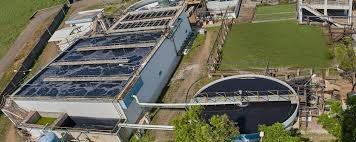Effluent Treatment Plant in Pharmaceutical

📌 Effluent Treatment Plant (ETP) in Pharmaceutical Industry
🔹 Importance
Pharmaceutical industries generate wastewater containing:
-
Active pharmaceutical ingredients (APIs)
-
Organic matter, solvents, and chemicals
-
High Biological Oxygen Demand (BOD) and Chemical Oxygen Demand (COD)
-
Suspended solids, toxic substances, and pathogenic microorganisms
ETP is essential to treat wastewater before discharge or reuse, ensuring compliance with environmental regulations and protecting public health and ecosystems.
🔬 Principle of ETP
The working principle of an Effluent Treatment Plant is based on:
-
Physical, chemical, and biological processes to remove contaminants.
-
Converting toxic, harmful effluent into an environmentally safe form.
⚙️ Main Stages of ETP in Pharmaceuticals
-
Preliminary Treatment
-
Screening (removes large solids, plastics, debris)
-
Grit removal (sand, silt)
-
-
Primary Treatment
-
Equalization tank (balances flow & pollutant load)
-
Neutralization tank (adjusts pH)
-
Coagulation & flocculation (removes suspended solids)
-
Primary clarifier (sedimentation of sludge)
-
-
Secondary Treatment (Biological)
-
Aeration tank (microbial degradation of organics – activated sludge process, MBR, MBBR)
-
Secondary clarifier (settling of biological sludge)
-
-
Tertiary / Advanced Treatment
-
Filtration (sand, carbon filters)
-
Disinfection (chlorination, UV, ozone)
-
Reverse Osmosis (for high-purity discharge if required)
-
-
Sludge Management
-
Sludge thickening, dewatering, and safe disposal/incineration.
-
🏭 Applications in Pharmaceuticals
-
Treatment of wastewater from manufacturing processes (API, formulations, QC labs).
-
Ensuring compliance with CPCB, SPCB, US EPA, and WHO guidelines.
-
Protecting environment, groundwater, and aquatic life.
-
Supporting sustainable pharma operations by enabling water reuse/recycling.

